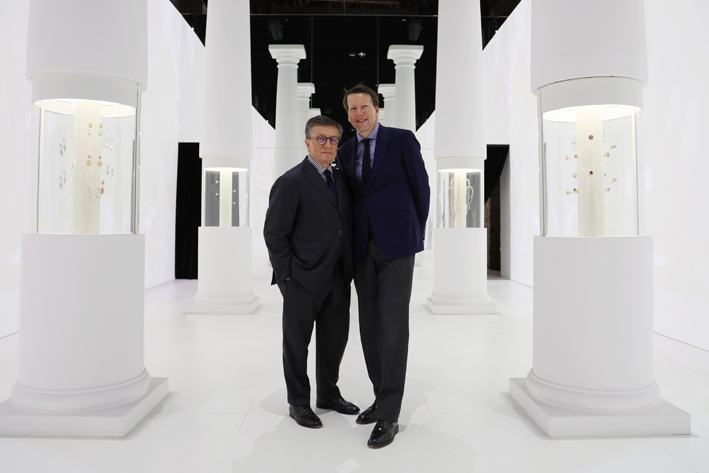The history of Buccellati, one of the historic Maisons of Italian jewellery, which today is part of the Richemont group, on display. The Prince of Goldsmiths, Rediscovering the Classics is dedicated to the brand founded over a century ago, which includes pieces of high jewelry that summarize the history and craftsmanship of Buccellati. The exhibition (18 April-18 June 2024) is hosted in the spaces of Oficine 800 on the Giudecca canal, Venice. The creative concept and creation are by Balich Wonder Studio, while the care was entrusted to Alba Cappellieri, who selected the precious jewels made with the typical burin technique of Florentine goldsmithing (the Buccellati family, who have been operating in Milan since the beginning of last century, are of Tuscan origin).

The title of the exhibition, The Prince of Goldsmiths, alludes to the definition attributed to Gabriele d’Annunzio, one of the most influential Italian writers and poets of the twentieth century, who in 1936 defined Mario Buccellati in this way. And, given that Buccellati’s style inherits the goldsmith tradition that dates back to the Renaissance, the theme of the exhibition is Rediscovering the Classics, the rediscovery of the classics.

The classics offer the pleasure of rediscovery, evoking timeless worlds of elegance, art and nature. Retracing them means reinterpreting age-old traditions and forms with an ever-present look. This is the objective of the exhibition, an even more precious moment for us as it is hosted in Venice.
Andrea Buccellati, creative director and honorary president

Buccellati is not just jewels. The exhibition also offers a panorama of artistic silver conceived as objects for the home, which added luster to the history of the Maison.
This exhibition is a wonderful time machine that takes us on a journey from the beginning of the twentieth century, when Mario created sublime objects for Gabriele d’Annunzio and his muses, to the seventies in which Gianmaria modeled the goldsmith techniques of the Renaissance with the color of his sumptuous cocktail jewelry. Until the present, which Andrea interprets with the contemporary elegance of his Cuff bracelets and his soft sets. The Buccellati show us that without a past there is no future.
Alba Cappellieri, Professor of Jewelery Design at the Polytechnic of Milan

One of the symbolic jewels is a butterfly, the Buccellati Venezia Butterfly, created for the occasion, and which guides each section from the first room: always a symbol of the Maison and of the generations of the family who guided its creative direction, the butterfly embodies the evolution and soul of Buccellati, representing its phases in different forms.

For the exhibition Marco Balich was inspired by the distinctive, long and narrow shape of Oficine 800, dividing them into two parallel sections. A play of lines and geometries traces an ideal perspective line, which becomes the path for the visitor: sometimes it is an imaginary path guided by video installations, other times the perspective is infinitely multiplied, thanks to a clever play of mirrors.

The icons of Buccellati’s goldsmith production blend perfectly with the symbols of our artistic heritage, such as Cupid and Psyche. The exhibition celebrates the beauty of the Maison’s creations and classical arts in a timeless city through a contemporary reading and emotional direction, capable of generating wonder.
Marco Balich, Chairman of Balich Wonder Studio

The first room, The Buccellati Generations, immediately shows the design of the wings of the Buccellati Venezia Butterfly. The second room, Manmade Wonders, reveals precious silver creations, including boxes, smoking accessories and handbags, all evidence of the Maison’s craftsmanship. The third room, Natural Wonders, offers silver masterpieces, characteristic of the Buccellati style, which stands out for what in the Renaissance was referred to as the Subtle Art, or the art of masterfully working silver. It exemplifies the artisanal skill of the Buccellati masters in ancient manufacturing techniques, such as embossing and chisel to create leaves, buds, shells and lush creatures, including crustaceans, marine animals, feathers and fur masterfully recreated with the Furry technique. The last room, The Gallery of the Icons, an infinite, completely white gallery, features a series of columns with a neoclassical style, arranged in two parallel and opposite rows, creating a multiplier visual effect. In this almost surreal environment, the jewels are displayed in a transparent section, created in the columns at eye level, almost as if they were floating beings. The four central columns of the room show the main distinctive techniques of the Maison: Tulle, Lace, Engraving and Chaining.
















